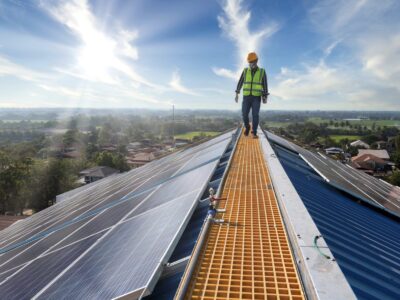By now, it should come as no surprise that anything that can convert into energy will be attempted as we make inroads in other novel methods of power generation. Solar and wind power sources are certainly promising, but a different technique that is making waves is the idea of converting food waste into a widely applicable energy source.
Anaerobic digestion isn’t a new idea, and has been a process utilized by farmers around the country for a few years. What anaerobic digester (AD) setups do is take various forms of existing waste – from leftover produce, fats and oils to manure and even brewery wastewater – and throws that waste into a specialized tank filled with powerful micro-organisms that are generally some form of acidogenic bacteria. The micro-organisms then begin the actual digestion process, converting the waste into a biogas which is comprised of methane, carbon dioxide, hydrogen sulfide, and water vapor. This biogas can be used for heating, but can also be further refined down to isolate the methane, which is then easily converted into a variety of energy needs in areas like transportation as a renewable natural gas.
Much like wind turbines and solar panel technology, anaerobic digesters are quickly becoming industrialized as larger investors enter the market. The biggest AD facility currently in operation in the United States is located at the Maryland Food Center Authority, a capstone project for a state consistently among the leaders in renewable energy development. At an event held in anticipation of the Jessup site nearing completion, Maryland Governor Larry Hogan praised the efforts of the state and developer Bioenergy Devco for advancing sustainability as communities work towards ambitious emissions reductions targets. “We set a bold goal to reduce greenhouse gas emissions by 50% by the year 2030, and we’ve been leading by example to achieve that goal,” said Hogan in a statement. “Today as we cut the ribbon on this new Bioenergy Devco facility at the Maryland Food Center Authority, we are taking another step forward.”
As the facility ramps up operations, we can expect a peak processing capability of roughly 125,000 tons of organic material each year. Bioenergy Devco states that this waste will be refined into 265,000 MMBtu of clean energy each year, which converts to almost 78 GWh. The Maryland center also boasts a significant carbon sequestration impact equivalent to a wooded area nearly 60 times the size of Central Park.
The Jessup facility’s construction couldn’t have come at a better time. A recent law is expected to create a dramatic shakeup in the way the state’s largest food producers handle their unsold and expired products (something one could expect to benefit large-scale anaerobic digestion operations significantly). The current status quo in Maryland sees grocery stores and restaurants simply dumping their food waste into landfills, a common practice nationwide. Starting in 2023, however, businesses that produce at least two tons of food waste per week will be barred from sending it to landfills, instead required to give it to facilities like Jessup in addition to farms with smaller digesters. State lawmakers argue that the ten percent increase in disposal costs for large generators of waste is a small price to pay for introducing a robust food-waste economy in Maryland. So, even if the Food Center Authority site isn’t yet hitting their capacity numbers in the coming year, this policy change will ensure a thriving business by 2023.





